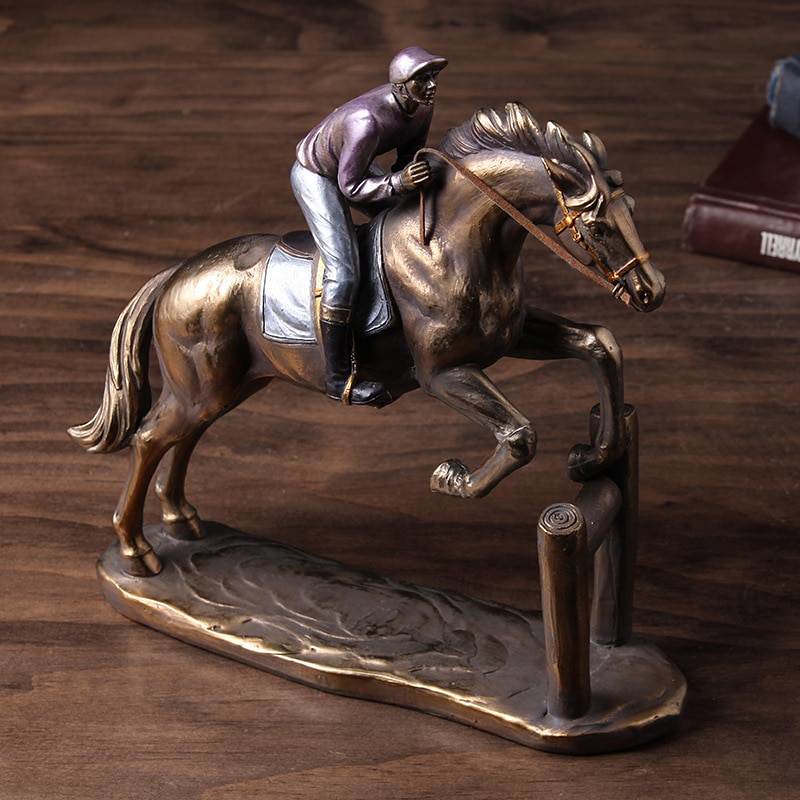As the temperature drops, horses burn more remington horse statue vitality to stay warm, subsequently their energy requirements will improve. We are able to provide our horses additional energy within the type of concentrates and forage. Forages are digested by the microbes in your horses large intestine and produce extra heat than concentrates. An ideal analogy is to check concentrate and forage to your wooden stove. Concentrates are your kindling and Forage are the logs. Ideally a horse would obtain free alternative hay throughout the winter. How much further forage does your horse want to stay warm? Then they'll regulate in the event that they want roughly throughout the day and night. A few of us have straightforward keepers who would not do effectively on free alternative hay! For these horses, we have to regulate their intake. Weigh out their hay and provide it in small gap hay nets to prolong their quantity of chew time. The first thing it's essential to do is learn the way a lot your horse weighs. Using body size plus heart girth tends to be more correct. I recommend using the following method versus a weight tape that only wraps around the center girth. Utilizing a comfortable measuring tape (the kind typically found in sewing kits) measure your horses coronary heart girth and write the number of inches down. Subsequent, measure the body length from level of shoulder to point of hip, and write it down. Write down the HG and BL additionally, this will assist make sure you that you're measuring at the same location each time. Make sure you write all of it all the way down to seek advice from throughout the winter. If you're a number of inches off, almost certainly you might be measuring from a barely totally different location (until you'll be able to tell by looking that your horse has obviously gained or lost weight). Strive to find landmarks. Paint horses have nice landmarks! Now that you understand how much your horse weighs, you can work out how much hay he must eat. Your average horse in ideally suited weight ought to eat 2% of his physique weight. Some hard keepers require upwards of 2.5% of physique weight. If you have an overweight horse, you'll be able to drop all the way down to 1.5% of his body weight, but no lower than that or you will be creating a complete other set of points! 23lb of hay per day. Max weighs 1,159lb and must eat 2% of his physique weight. When the temperature drops beneath forty five levels F (together with wind chill) horses begin to burn additional vitality to remain warm. This 45 diploma mark is named "Important Temperature". For each 1 degree F beneath the essential temperature, your horse would require a 1% improve in digestible energy (DE). As with every part horse associated, there are numerous variables to this rule, corresponding to wind chill, rain/sleet, your horses coat thickness or if you happen to blanket. Consider digestible vitality like your horses calorie requirement. Since horse nutrition is 90% math, lets get back to that! If I continue with the math we might calculate your horse's DE requirements, subsequent calculate how much extra DE is needed for your current temperature, next take a look at your hay to see exactly how a lot DE it provides per pound, lastly calculate how a lot further hay will provide the additional DE required for the present temperature. If it's 20 levels F the place our buddy Max lives he would need an extra 2 1/2-5lb of hay. This guideline is for horses at upkeep or gentle work. Further hay will likely be needed if your horse is a tough keeper, in heavy work, or on poor quality hay.
